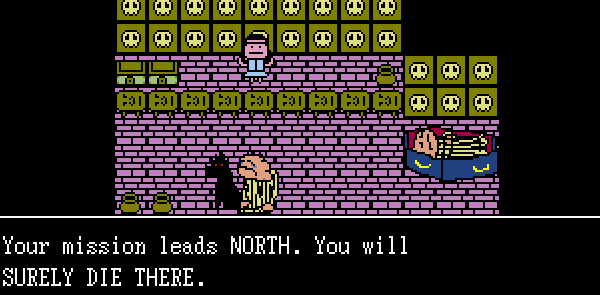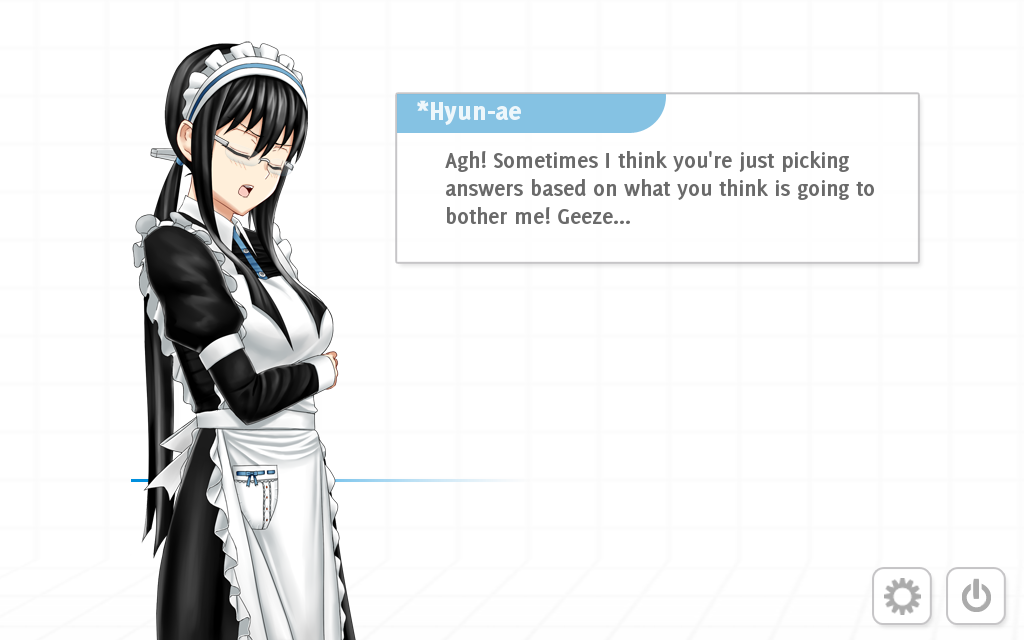Here are today's (mostly) free indie game recommendations, and quite a bit of reflection.
First Recommendation: Black Mesa
This is old news to any Half-Life fans, but for the rest of you, Black Mesa is a totally free fan-made remake of the original Half-Life in the Source Engine, and it is just about one of the best FPSs that's been released recently I never thought I'd say this about a shooter game, but it is one of the most refreshing games I've played in a while. Let me explain.
When most people talk about a game, they talk about the game's "features" - the game's core play mechanics - as though it's some sort of appliance. Games often designed starting with the features, instead of the world that the game takes place in or the story. Borderlands, for example, was first conceived of as a game that combines FPS gunplay with RPG looting mechanics, not as the story of treasure hunters on a wasteland planet. When people complain about games, they often complain about how the mechanics of a game's sequel are not different from its predecessors, or they complain that a game is just a clone of another. I find this confusing, comparing games in such a technical way is like comparing novels by the length of their chapters or the use of certain grammatical constructions. Criticizing two shooter games because they have similar game play is like criticizing two novels because they are written in the same satirical style. This is how people think about games, anyway.
Most action games I've played recently- Borderlands, Rage, Mass Effect, Bioshock, Zeno Clash, among others - are symptomatic of this way of thinking of games. The emphasis is placed entirely on the mechanics - what the player can do, what the guns do, what the enemies do - and on little else. This means that you have fairly linear levels that, while visually stunning, are fairly static. For the most part, the only interaction in the combat sections of these games is between the player and things that he shoots or hits. While each level changes in aesthetic, your location has no impact on the interactive aspect. Instead, any changes in interactivity between each level is only what the player fights and what he fights them with. Frankly, this is tedious: every interactive encounter in these games are identical.
Black Mesa, and the Half-Life franchise as a whole, take a much different approach. The player encounters new enemies and weapons throughout the game, but these things aren't what keeps the game fresh from level to level - the meaningful change is in the levels themselves. In most recent action games, the context in which the player does battle is often irrelevant the experience outside of itself, in the Half-Life games it defines the experience. Even though I should be endorsing Black Mesa in this essay, I'm mostly going to use examples from the similarly-styled Half-Life 2 since I have played it more recently than its fan-made prequel.
While each individual fight in Borderlands or Rage is just like the other, fights in Black Mesa and Half-Life 2 are much more memorable. While every fight with a Banshee in Mass Effect 3 was the same as every other one, every fight with a gunship in Half-Life 2 was drastically different. Even though the core mechanic is the same in each encounter - you must steer missiles from your missile launcher through the ship's gunfire and into the ship itself a number of times before it goes down - the changing setting makes each fight exciting and memorable. The first time, you fight the gunship from the rooftops of buildings, as allies supply you with ammo meanwhile. Later on, you fight the ship under the beam supports of a bridge - running on the narrow beams to find valuable cover and ammo. In the sequel, Episode 1, you fight the ship inside a wooden building. Initially, the entire building is intact and you can't even see the ship - but the roof, walls, and floor are torn up in the struggle, making it easier to hit the ship, but also making it difficult to navigate the building and avoid gunfire. Each encounter with the gunship is distinct, memorable, and feels like a totally different experience. Encounters in other games are often homogeneous and undifferentiated from each other.
The worlds of Black Mesa and Half-Life 2 are some of the most convincing virtual worlds ever built, even though they are made in a game engine that is now over eight years old. This is not only because the levels influence the action more than the core mechanics do, but also because the levels themselves are used to tell the story. The settings in most games are just that - settings - while explication of the story and game world are handled entirely through cut scenes, dialogue, and encyclopedia entries. That is, the game gives you a setting and tells you what it all means. The Half-Life games, alternatively, have their worlds explain themselves. The first Chapter of Half-Life 2 is one of the greatest examples of how game worlds can tell a story without explicitly telling it to them in a traditional manner. In this chapter, the hero rides a train into City 17 with absolutely no historical or societal context, but after walking through the run-down city, observing armored cyborg soldiers brutalize civilians wearing identical uniforms, watching the civilians converse with themselves and go about their daily lives, and listening to the propaganda espoused by Dr. Breen across the city, the player quickly figures out essential information about the game's world. No one explicitly tells the player that Earth is under siege from alien "benefactors" who have established an Orwellian regime that seeks to assimilate humanity into their war machine, but no one needs to - by the end of the first chapter, the player knows all of this. This method of story telling is used throughout the game - no one tells the player about how headcrabs are used for biological warfare, about how humans and other species are transformed into cyborg war machines and lose their personalities, or that humanity is on the verge of breaking into all-out revolution. Instead, the player explores a town ravaged by biological warfare, escapes from the facilities in which humans are transformed into machines, and witness increasing acts of defiance leading up to the revolt.
Yet another reason that the worlds of Black Mesa and Half-Life 2 are so engaging is that they give the player incredible freedom to interact with it. Nearly any object can be picked up, moved, thrown, or destroyed; structures can be, to some extent, built and destroyed. You can talk to any civilian, press the buttons on any computer display, microwave, and in one instance, miniature teleportation device. If it has wheels you can push it, if you can stand on it the game won't stop you with invisible walls. Much of this interaction seems trivial, but it really makes you feel as though you're in a real place and not just in a corridor filled with guns and bad guys. More than that, it gives the player to solve problems and defeat enemies in ways that the developers didn't intend: you can stock objects to reach areas that would otherwise be forbidden, or you can pick up a barrel and use it as a shield from enemy bullets. Most games these days provide you with one way to solve your problems (in shooters this solution is usually take cover, aim, shoot, and repeat) and explicitly tells the player how to solve these problems in some sort of tutorial. Black Mesa and HL2, meanwhile, do not tell the player how to solve his or her problems, but instead provides the tools needed and lets him or her figure it out using creativity and trial and error. It's a real shame that Valve, back in 2004, pioneered the in-game physics technology that makes greater player freedom possible, yet developers have instead shied away from giving the player freedom, instead using the technology for mere aesthetics.
The point I'm trying to make is, game play mechanics - the 'rules' - have much less to do with the quality of a game than most players and developers think. Although this is fairly obvious when discussing a game's world or story, it is also true when it comes to the "action" of a game itself. Valve understands this, and the Black Mesa team understood this too. Black Mesa's story obviously pales in comparison to its sequel's, but the game's world is every bit as amazing. If you have Steam, go download it!
Second Recommendation: Space Funeral
Space Funeral's become a bit of a cult classic since I first played it years ago. I just replayed the short punk-styled RPG again out of nostalgia and was pleasantly reminded of its quirks. It tells the story of a man and a leg horse as they try to save the world. The combat is broken, unchallenging, and needlessly overwhelming, but that is beside the point - the wonderfully bizarre game world more than compensates for this. If you want to play a short, hilarious, quirky, and memorable RPG check it out. Seriously, though, the hero's supporting party member is a horse made out of legs called Leg Horse. That should be enough to convince you to play it. Like most stuff I recommend, its free.
Third Recommendation: Analogue: A Hate Story
I really enjoyed Digital: A Love Story and couldn't wait to try out its spiritual successor. Although it wasn't reviewed very well, that's only because people are idiots and don't have the patience to play a game that mostly consists of reading. Analogue: A Hate Story is a short "interactive novel" in which the player must investigate an old derelict space ship, read the ship's logs, and solve the mystery of its crew's death using the help of the ship's artificial intelligences. The writing is good, the AI characters are remarkably well developed, and the story of the excessively patriarchal society that developed on the ship is horrifying. The story can branch out in a fairly complex number of ways, and the player is forced to make some decisions of moral ambiguity. The soundtrack's great too. It may not be everybody's cup of tea, but if it sounds tasty to you, check it out here. Costs $10 on Steam.




No comments:
Post a Comment